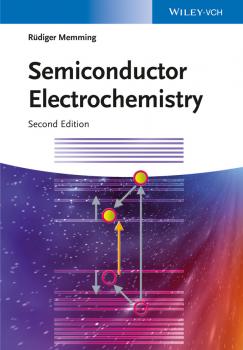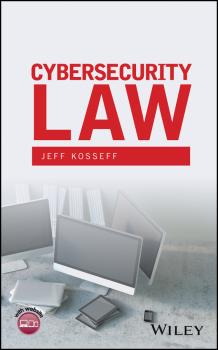ТОП просматриваемых книг сайта:
John Wiley & Sons Limited
Все книги издательства John Wiley & Sons LimitedАннотация
As an industrial process, construction is unique in that the method of procurement of any built asset (building, infrastructure or process plant) defines many of the subsequent management processes that take place during the building phase – a very different situation to the purchase of goods and services in most other industries. The procurement process is therefore central to the success of any construction project and many of the problems which impact construction projects can be traced back to the procurement phase, so a good understanding of the methods of procurement and the influence it has on project success is essential for all those working in the industry. Much has changed in the global construction industry since publication of the first edition of Building Procurement, for example the global liquidity & banking crisis and the debt burden of many major economies. This new edition has been rewritten to take account of these significant developments, but at its core it continues to provide a critical examination and review of current procurement practices in the UK, continental Europe (including EU procurement procedures), China and the USA. It retains its original strong emphasis on the need for clients to establish achievable objectives which reflect the project business case and focuses on development of suitable strategies and management structures to meet those objectives in the current construction climate. Building Procurement will be essential reading for senior undergraduate and postgraduate students of construction management and practitioners working in all areas of construction management. Review of the first edition «…a thorough and comprehensive investigation of building procurement…» Construction Management and Economics
Аннотация
The second edition of Clinical Arrhythmology provides a fresh, clear, and authoritative overview that will guide readers from a solid understanding of the mechanisms behind cardiac arrhythmias – which is fundamental to their identification – to diagnosis via electrocardiograms and other tools, to specific management options for each of the arrhythmias that cardiologists and other clinicians will encounter in clinical practice. Organized in a clear, intuitive manner; introducing the reader to an understanding of the anatomical and electrophysiological bases of arrhythmias, then to a comprehensive review of how to diagnose the full range of rhythmic abnormalities, and then to a discussion of specific clinical syndromes in which arrhythmias play a part Highly illustrated chapters ensure key concepts are simpler to understand Detailed appendices provide quick reference values for diagnostic and therapeutic techniques, and pharmacotherapeutic agents, and Recommendations
Аннотация
Das Buch behandelt die klassische Punktmechanik und die Mechanik starrer Korper in den Newtonschen, Lagrangeschen und Hamiltonschen Formulierungen sowie die Schwingungs- und Wellenlehre und die relativistische Mechanik. Die wichtigsten Prinzipien der Mechanik werden nicht nur vorgestellt, sondern mit zahlreichen, uber Standardaufgaben hinausgehenden Beispielen praktisch angewendet. Damit konnen die Leserinnen und Leser die Vielfalt der Mechanik kennenlernen und die mathematischen Methoden einuben, die in fortgeschrittenen Kursen vorausgesetzt werden. Interaktive MATLAB-Applikationen und fotorealistische Animationen mechanischer Probleme veranschaulichen auch kompliziertere Sachverhalte. Aus Rezensionen zu fruheren Auflagen: 'Auch die Durchmischung des Stoffes mit anschaulichen Beispielen und der gut lesbare Text werden diese Ausgabe der Klassischen Mechanik in den Bestsellerlisten halten.' (Internationale Mathematische Nachrichten) 'Die Ausgewogenheit in Theorie und Anwendungen hilft, die klassische Mechanik als das zu erkennen, was sie wirklich ist.' (Optik) Stimmen von Hochschullehrern zu fruheren Auflagen: '… ist das Buch von einer bestechenden Didaktik. Das au?ert sich im Sprachstil, der dem Leser die Begeisterung des Autors unmittelbar mitteilt …' '… mit allergro?ter – wissenschaflicher wie padagogischer – Sorgfalt …' '… ausgewogen in Theorie und Anwendungsbeispielen …'
Аннотация
Providing both an introduction and an up-to-date survey of the entire field, this text captivates the reader with its clear style and inspiring, yet solid presentation. The significantly expanded second edition of this milestone work is supplemented by a completely new chapter on the hot topic of nanoparticles and includes the latest insights into the deposition of dye layers on semiconductor electrodes. In his monograph, the acknowledged expert Professor Memming primarily addresses physical and electrochemists, but materials scientists, physicists, and engineers dealing with semiconductor technology and its applications will also benefit greatly from the contents.
Аннотация
Written by a leading expert on Aspirin-related research, this is the most comprehensive treatise on the pharmacological effects and clinical applications of one of the most successful drugs ever. The text is written with a wide audience in mind, and to be readily understandable for clinicians, pharmacists, biomedical researchers and pharmacologists alike. This second, completely revised edition contains the latest results of clinical and pharmacological research on Acetylsalicylic acid, addressing the multiple pharmacological properties of this famous drug with a balanced view on their translation into clinical practice, including prevention from cardiovascular diseases and colorectal cancer.
Аннотация
Strategy is the art of thinking about war before it occurs. Noting that space already plays a role in all of today’s wars, Space Strategy studies how conflicts are extending into this new domain. The book defines extra-atmospheric space and focuses on its varying features and constraints. By exploring the opportunities for action provided by different strategic positions, the book analyzes the most plausible combat scenarios from, against and within space. It explains the concepts of militarization, weaponization and martialization of space and shows how space systems constitute an essential component of information literacy – the key to power in the 21st Century. Space Strategy then demonstrates why our society, having become space-dependent, must take appropriate measures to develop its spatioresilience. Finally, the author summarizes his reflections in the form of a mnemonic listing twelve principles of space strategy. Completed by educational appendices and a glossary containing one thousand entries, Space Strategy meets the needs of students, researchers or any other reader curious about expanding their knowledge of strategy.
Аннотация
Cyberspace is one of the major bases of the economic development of industrialized societies and developing. The dependence of modern society in this technological area is also one of its vulnerabilities. Cyberspace allows new power policy and strategy, broadens the scope of the actors of the conflict by offering to both state and non-state new weapons, new ways of offensive and defensive operations. This book deals with the concept of «information war», covering its development over the last two decades and seeks to answer the following questions: is the control of the information space really possible remains or she a utopia? What power would confer such control, what are the benefits?
Аннотация
The definitive text for students of digital forensics, as well as professionals looking to deepen their understanding of an increasingly critical field Written by faculty members and associates of the world-renowned Norwegian Information Security Laboratory (NisLab) at the Norwegian University of Science and Technology (NTNU), this textbook takes a scientific approach to digital forensics ideally suited for university courses in digital forensics and information security. Each chapter was written by an accomplished expert in his or her field, many of them with extensive experience in law enforcement and industry. The author team comprises experts in digital forensics, cybercrime law, information security and related areas. Digital forensics is a key competency in meeting the growing risks of cybercrime, as well as for criminal investigation generally. Considering the astonishing pace at which new information technology – and new ways of exploiting information technology – is brought on line, researchers and practitioners regularly face new technical challenges, forcing them to continuously upgrade their investigatory skills. Designed to prepare the next generation to rise to those challenges, the material contained in Digital Forensics has been tested and refined by use in both graduate and undergraduate programs and subjected to formal evaluations for more than ten years. Encompasses all aspects of the field, including methodological, scientific, technical and legal matters Based on the latest research, it provides novel insights for students, including an informed look at the future of digital forensics Includes test questions from actual exam sets, multiple choice questions suitable for online use and numerous visuals, illustrations and case example images Features real-word examples and scenarios, including court cases and technical problems, as well as a rich library of academic references and references to online media Digital Forensics is an excellent introductory text for programs in computer science and computer engineering and for master degree programs in military and police education. It is also a valuable reference for legal practitioners, police officers, investigators, and forensic practitioners seeking to gain a deeper understanding of digital forensics and cybercrime.
Аннотация
Transfusion Medicine provides a concise, clinically focused and practical approach to the field of blood banking and transfusion therapy written by international expert, Jeffrey McCullough MD. Concise, approachable, yet comprehensive approach to the field of transfusion medicine and blood banking Offers extensive guidance on important topics such as; donor recruitment, blood collection and storage, donor testing and clinical uses of blood components, techniques of administration of blood components, complications of transfusion, transmissible diseases, the HLA system, and many more Provides new content on patient blood management systems, the changing indications for red cell transfusion, new transmissible disease agents, management of massive blood loss, pathogen reduced blood components, therapeutic apheresis including photopheresis, management of massive transfusion and new cellular therapies. Discusses global blood supply and US blood supply organizations and their consolidation and reorganization Reviews other topics of current interest, such as mitigation strategies for TRALI prevention, effects of storage of blood on adverse effects, management of massive blood loss and massive transfusion protocols pathogen inactivation, and granulocyte transfusion Extensively referenced for further study
Аннотация
A definitive guide to cybersecurity law Expanding on the author’s experience as a cybersecurity lawyer and law professor, Cybersecurity Law is the definitive guide to cybersecurity law, with an in-depth analysis of U.S. and international laws that apply to data security, data breaches, sensitive information safeguarding, law enforcement surveillance, cybercriminal combat, privacy, and many other cybersecurity issues. Written in an accessible manner, the book provides real-world examples and case studies to help readers understand the practical applications of the presented material. The book begins by outlining the legal requirements for data security, which synthesizes the Federal Trade Commission’s cybersecurity cases in order to provide the background of the FTC’s views on data security. The book also examines data security requirements imposed by a growing number of state legislatures and private litigation arising from data breaches. Anti-hacking laws, such as the federal Computer Fraud and Abuse Act, Economic Espionage Act, and the Digital Millennium Copyright Act, and how companies are able to fight cybercriminals while ensuring compliance with the U.S. Constitution and statutes are discussed thoroughly. Featuring an overview of the laws that allow coordination between the public and private sectors as well as the tools that regulators have developed to allow a limited amount of collaboration, this book also: • Addresses current U.S. and international laws, regulations, and court opinions that define the field of cybersecurity including the security of sensitive information, such as financial data and health information • Discusses the cybersecurity requirements of the largest U.S. trading partners in Europe, Asia, and Latin America, and specifically addresses how these requirements are similar to (and differ from) those in the U.S. • Provides a compilation of many of the most important cybersecurity statutes and regulations • Emphasizes the compliance obligations of companies with in-depth analysis of crucial U.S. and international laws that apply to cybersecurity issues • Examines government surveillance laws and privacy laws that affect cybersecurity as well as each of the data breach notification laws in 47 states and the District of Columbia • Includes numerous case studies and examples throughout to aid in classroom use and to help readers better understand the presented material • Supplemented with a companion website that features in-class discussion questions and timely and recent updates on recent legislative developments as well as information on interesting cases on relevant and significant topics Cybersecurity Law is appropriate as a textbook for undergraduate and graduate-level courses in cybersecurity, cybersecurity law, cyber operations, management-oriented information technology (IT), and computer science. This book is also an ideal reference for lawyers, IT professionals, government personnel, business managers, IT management personnel, auditors, and cybersecurity insurance providers. JEFF KOSSEFF is Assistant Professor of Cybersecurity Law at the United States Naval Academy in Annapolis, Maryland. He frequently speaks and writes about cybersecurity and was a journalist covering technology and politics at The Oregonian, a finalist for the Pulitzer Prize, and a recipient of the George Polk Award for national reporting.










